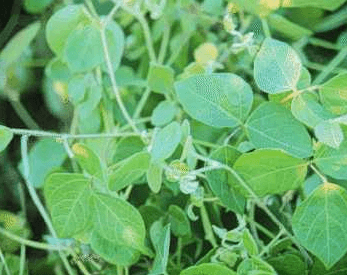A Shakespeare Garden- History of Herb Gardens
Shakespeare had a countryman’s joy and delight in the herbs and flowers of hedgerows, meadows and gardens, with which he was so familiar during his rural upbringing. He loved them for the sake of their beauty, meaning and perfume, and wove many of them into his plays and sonnets.
We made a Shakespeare garden some years ago and beside each herb and flower a small notice was inscribed with the appropriate quotation on it. The size and shape of the Shakespeare plot may follow any of the suggestions for herb gardens already described but the special atmosphere that is evoked in a Shakespeare garden needs a few of Shakespeare’s garden needs a few of Shakespeare’s own words ot complete the magic.
Our Shakespeare garden is oblong with a paved area in front of it and garden seat nearby so that one can relax and contemplate at leisure. A clipped, dwarf box hedge gives it a slightly formal air and a statue of a small boy placed under a curved bower of miniature climbing roses is the focal point. In the fore ground is low- growing matting thymes;
“I know a bank where on the wild thyme blows.”
A midsummer Night’s Dream
Clustered in several places are golden clumps of cowslips, oxlips and primroses.
“The even mead that erst brought sweetly forth
The freckled cowslip, burnet and sweet clover”
And “bold” oxlips, which seem to look halfway between a cowslip and a primrose:
“… Bold oxlips and
The crown imperial”
The winter’s Tale
He describes primroses many times, especially nothing their ethereal beauty:
“Pale primroses
That dies unmarried ere they can behold
Bold Phoebus in his strength”
The winter’s Tale
Pretty Bellis perennis, or pink and white English daisies, are grouped together in a rosy glow:
“When daisies pied and violets blue,
And lady smocks all silver- white,
And cuckoo- buds of yellow hue
Do paint the meadows with light.”
Love’s Labour’s Lost
Columbines are planted in front of the box hedge and their old- fashioned bluebonnet flowers nod above their delicate foliage:
“There’s fennel for you and columbines.”
Hamlet
Grey – leaved carnations and “gilly-vors” (a smaller type of carnation) are in this collection near the columbines, their flowering time sometimes coinciding – according to the season;
“….. The fairest flowers o’ the season
Are our carnations, and streak’d gillyvors.”
The winter’s Tale
The early form of pansy, before it became a giant hybrid , was Wala tricolor, and thank goodness it is still with us, and goes by many names heartsease, love – in- idleness, Johnny jump – up and cupid’s flower are a few. The plant is massed with tiny pansy-like flowers of purple and gold in spring; it self- sows readily and since it is an annual its little pod of seeds, which ripen after flowering, burst open and fall on the ground , the welcome seedlings appearing again year after year. We let it grow unchecked, and remember that it was the flower Oberon told puck to find to put Titania to sleep in A Midsummer Night’s Dream;
…. And maidens call it love – in – idleness Fetch me that flower: the herb I showed thee once;
The juice of it, on sleeping eyelids laid, will make or man or woman madly dotes upon the next live creature that it sees.
A sliver-grey wormwood hedge surrounds the garden, and appropriately it was the herb Oberon used to awaken Titania, and called more delightfully by Shakespeare “Dian’s bud”:
“Be, as thou was wont to be:
See as thou was wont to see;
Dian’s bud o’re Cupid’s flower
Hath such force and blessed power.
Now, my Titania! Wake you, my sweet queen”
A Midsummer Night’s Dream
There are many more herbs and flowers to plant in a Shakespeare garden. The white Florentine iris, Iris germanica, or “Fair Flower- de- Luce”
Henry V.
All the herbs mentioned in these lines form The Winter’s Tale are in the garden:
“Hot lavender”, mints, savory and marjoram
There is a rosemary bush for Ophelia:
“There’s rosemary, that’s for remembrance; pray you love, remember.”
Hamlet
And also rue, the “Herb of Grace”;
“There’s rue for you;
And here’s some for me;
We may call it herb- grace o’Sundays:
O you must wear your rue with a difference.”
Hamlet
Honeysuckle, the early form with small, scented creamy flowers, and often called “woodbine”, is a reminder of Titania’s bower “over-canopied with lush woodbine” in A Midsummer Night’s Dream.
There must be roses in a Shakespeare garden. As well as the rose arch which enshrines the small statue in our garden there are other historic old roses planted outside its confines to catch the sun and air; they include the white rose of York and the red rose of Lancaster, which historically eventually became united in the red and white Tudor rose:
“We will unite the white rose and the red.
Smile, heaven upon this fair conjunction.”
Richard III.
The cuckoo- bad or buttercup we did not plant because of its invasive root system , nor do we have lady smocks, harebells or eglantine, simply because there is no more room! Daffodils are in other parts of the garden, as are violets, fennel and marigolds. There is a crabapple tree in one corner of the Shakespeare garden. A favourite drink in The Bard’s day was roasted crabapples dropped into ale:
“When roasted crabs hiss in the bowl
Then nightly sings the staring owl.”
Love’s Labour’s lost
Hemlock, fennel and crow flower, or ragged robin, are a few more of the many other “Shakespeare” plants.




